Amber's blog
|
Disclaimer: I still haven't gotten used to the whole idea of blogs. It seems as though all my friends have them, everyone reads them, media scholars hail them as a new paradigm... but why? Why has it become so popular to present information in the form of random musings? I thought I would give it a go anyway, but Cecilia's blog is far more interesting than my own. (Cecilia is the heroine of PhD Comics.) |
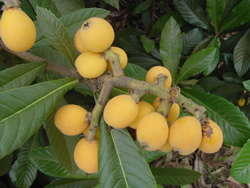
15 September 2008 | Frugivory

I have been a vegetarian for quite a few years now, but this summer I very nearly became a frugivore. I think it was a natural result of my affinity for plants combining with my grad-student instinct to seek out free food. With plenty of fruit for the taking, why not?
It began in June with the wild plums and the loquats. I got into the habit of picking some loquats for breakfast on my walk to the greenhouse, polishing their fuzzy skins on my sleeve and spitting the smooth brown oval seeds into the flowerbeds that I passed. The loquats lasted well into July. For brunch on the Fourth of July, instead of going to the supermarket for fruit, I took a quick bike ride through the neighborhood and brought back a bag full of loquats and yellow and red wild plums. Jeremy knows me well enough by now that he wasn't surprised, and ate them willingly.
I had planned to make elderberry pancakes on the Fourth, as I remember Mom once doing when I was a child, but unfortunately the elderberries weren't ready by then. However, it turned out to be a great year for elderberries. I saw bushels of the dusty-blue berries hanging from trees along roadsides and pathways, and salivated as I imagined elderberry pancakes, jam, and cider. I never got around to harvesting them on a large scale, but I often grabbed a handful from the tree near the President's house on campus as I passed by.
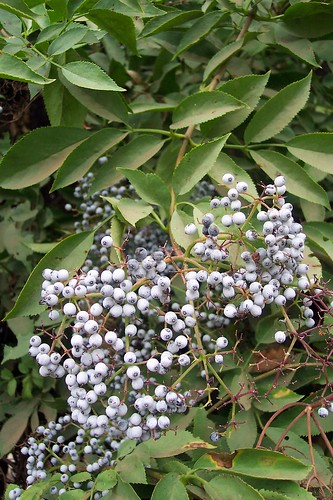
In late June and early July came an onslaught of cherries. The three new cherry trees in the lower garden, after years of complete barrenness, decided to make up for it by bearing more cherries than their branches could hold. It was a Garden of Eden; hours of picking made almost no dent in the supply. One morning I took a big bag of cherries with me to campus on the back of my bike, and near the Kensington library, the bag fell off into the road. Oh no! Cherry pulp. So I made the best of it and immortalized the cherries as... well, I would like to say "jam," but since I had no pectin, it was in fact cherry syrup.
After the cherries came strawberries, raspberries, boysenberries, and succulent yellow plums. Jeremy and I made a wonderful strawberry shortcake with piles of fresh strawberries. The best part was picking them: crouching in the warm sun, searching under the shiny green leaves for splashes of red, and dropping the berries into a pie tin - at first with a satsifying plunk, and then, as the tin grew full, no sound at all.
To my delight, Cliff visited in July, a rare event since he usually comes for Christmas. Knowing how much he was looking forward to the summer fruit, I brought him a bag of it when I met him at the airport! The boysenberries got a little squashed, but he still enjoyed them. We continued to seek out fruit throughout his visit. Our discovery of ripe blackberries growing on brambles in Golden Gate Park brought back happy memories of childhood, as we braved the thorns to reach the sweet prize.
There was a bumper crop of yellow plums this year, and they lasted long after Cliff had flown back to Sydney. Jeremy especially liked the yellow plums. One morning we sat on Grandma's couch and watched The Godfather, and between the two of us, ate at least two dozen plums. The peaches were also wonderful - we've never grown peaches before, but Carolee planted a small tree that bore very well this year, with sweet fuzzy little peaches the size of golf balls.

I sometimes remembered to bring the bounteous garden fruit with me to campus, but sometimes not. If not, I always had the campus strawberry trees as a backup plan. The fruit of strawberry trees is edible, but they're not cultivated for their fruit, and it's not very tasty. It's sweet, but at the same time tart and mealy, and the bumpy skin adds a strange texture and a slight bitterness. However, I hate to see fruit go to waste. One afternoon when I was hungry and didn't want to pay for a meal, I ate several handfuls of them from the trees near the greenhouse. Honestly, I didn't feel great after that, but at least they were filling!
Now it's September, and the apples are beginning to fall from the trees. Apples have always been our most abundant fruit at El Cerrito; Grandma used to spend many hours in the kitchen peeling them to make applesauce. The task is made more difficult by the ubiquitous codling moth, which bores tunnels into the apples and leaves the core full of brown crumbly droppings. If you cut around the moth-holes, though, the apples are quite tasty. Last week I sliced a very large number of them to take to a potluck at Jeremy's manager's house. There were a few apple slices left over - in fact, we ate them this morning at the airport. (As I write this, we're on a plane to Phoenix for a wedding).
The weather in the Bay Area is turning cool now, and slightly damp. Summer, the season of fruit, is coming to an end. The falling of the apples signifies that I don't have much time remaining: in a few weeks, I will get on a plane to Malawi for my dissertation fieldwork - and, except for a brief winter visit, I shall not return until next June.
I have many things to look forward to when I come back. Not the least of these are the loquats, plums, strawberries and cherries that will welcome my arrival. These are the flavors of my childhood, of my family, and of my home.
29 July 2008 | The joys of moving


I'm moving out of my house in downtown Berkeley by the end of the month, and living with Grandma for two months before I leave for Malawi. I wanted to make it easy for my remaining housemate to find a replacement, and since students usually move in August, here I go!
I've been in this house for four years, and even though I'm not too much of a pack rat, it's inevitable that some amount of random junk will accumulate - especially with all the storage space I have. For example: a few moments ago, in the back of my closet, I found an old black computer case that I used to use for my beloved Gateway laptop, Jodie, whose hard drive failed in 2004.
I decided to give the computer case to Goodwill, since it doesn't fit Clara (my iBook). However, it really is quite a useful bag. It has space not only for a computer, but also for various cables, papers, pens, business cards, and more.
"Come to think of it," I said, "I'd better make sure I didn't leave anything in the pockets." So I searched and found:
- Paper bank notes, including USD $20 and Ksh 2650 (that's Kenyan shillings, equivalent to USD $38).
- The deck of playing cards that I got from Jupiters Casino in Brisbane, QLD, in 1998 (they have a hole punched through the middle to show that they are no longer good for casino use).
- A 3.5 inch floppy disk (what are those again?) with photos from my Master's research field site, and a computer cable with a type of plug I didn't recognize.
- A red sparkly elastic hairband from when I still had long hair!
- A piece of paper on which was scribbled phone numbers from all my friends in Mackay, along with directions to Dr Judith Wake's house in Farleigh. (Judith was my Environmental Science lecturer at CQU Mackay, and it is largely because of her that I am now an ecologist rather than a journalist or a cognitive psychologist).
- An exposed but undeveloped roll of 35 mm film (stay tuned! I'll take it to the pharmacy this afternoon and find out what was on that roll).
So, moving can be fun! I just have to be careful not to get too distracted by all the interesting things I discover. See, here I am writing this blog entry instead of finishing cleaning out my closet. I'd better get back to work...
5 May 2008 | A plague of frogs


When I talked to my parents on the phone several weeks ago, Dad said that the main news around our house lately was that a green tree frog had moved into the master bathroom. Its favourite spot was under the rim of the toilet bowl. In the evening, Dad would gently pick it up (it readily cooperated) and take it out onto the veranda to hunt bugs. He was never sure how it got back in the house, but every morning it reappeared under the toilet bowl rim.
"What an intrepid frog. Doesn't it mind when you flush the toilet?" I asked.
"No, I think it likes the spray," Dad said.
Last week Dad gave me an update: now that autumn had arrived and dry weather was here to stay, all the frogs had begun hibernation. So, too, had the frog in the bathroom. Despite its ready supply of water, our resident frog was compelled to follow its instincts and go find a sheltered place to wait out the dry season. So it disappeared from the toilet bowl to join its brethren. Dad hated to see it go, he said. (He is very fond of frogs.)
This occurrence reminded me of a conversation I had with Jeremy last year, which makes me chuckle whenever I think about it. For some reason our meandering discussion had turned to the Biblical Plagues, sent by the God of the Old Testament to punish the Egyptians for holding the Israelites in slavery. We looked up the list of all ten Plagues on Wikipedia. They are:
- Blood
- Frogs
- Lice
- Flies
- Pestilence
- Boils
- Fiery hailstorm
- Locusts
- Darkness
- Death of firstborn
"Now, wait a minute," I said. "I understand why pestilence or fiery hail or the death of firstborn children would be highly undesirable. But frogs? What's so bad about frogs?"
"Well," said Jeremy, "I guess there was an inconveniently large number of frogs."
"But frogs are harmless," I said. "How could you possibly have too many frogs?"
"Maybe there were frogs everywhere," said Jeremy. "Frogs in the kitchen. Frogs covering the floor. Frogs in the sink. Just imagine it!"
"I'm still not convinced," I said. "Frogs are cute."
"Maybe they were poisonous frogs," Jeremy said. "That wouldn't be so cute. Poisonous frogs all over your kitchen?"
"Nah, I don't think there are any poisonous frogs in the Middle East," I said. "Maybe it was actually a plague of toads. That wouldn't be much fun."
"Neither would a plague of frogs," said Jeremy.
"Yes it would," I said. "I'd be grinning and saying 'Awwww, frogs! Look at all the froggies!'"
"There must have been something bad about them," said Jeremy.
We did some internet research to try to find out exactly why the plague of frogs was so terrible, but nothing came to light. There was no reference to them being poisonous, or attacking people, or anything like that. I maintained that most people are just silly and don't like frogs. Their loss.
So, when I heard about Dad's delight about the frog in the bathroom, I had to laugh. That's one of the things I miss most about Queensland: the plagues of frogs.
P.S. Apparently an alternate translation interprets the Second Plague not as frogs but as crocodiles, which makes rather more sense to me.
31 March 2008 | Char

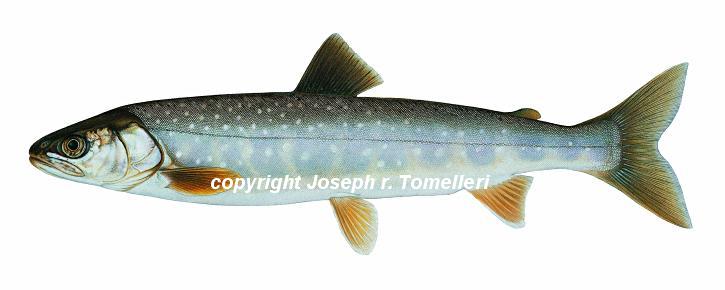
|
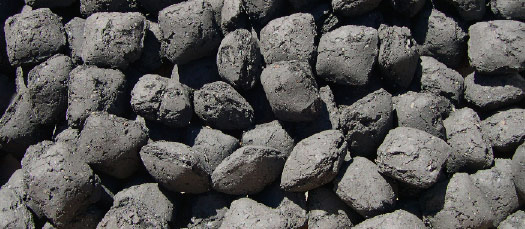
|

|
This post is probably amusing only to myself, but I thought I would write it anyway, as an illustration of the sorts of things that amuse me.
The research project I'm about to embark upon with my advisor, Margaret Torn, is a study of the decomposition dynamics of charred wood. My job is to grow a greenhouse full of ponderosa pine and red maple seedlings - isotopically labled with 13C and 15N, the better to track the fate of their biomass once it is burned and buried in soil.
I don't know very much about char (the technical term for partially combusted biomass). I need to learn more about its chemistry and its role in the carbon cycle. So I did a Google search for "char." And, on the first page of results, I got (in order)...
- An arctic fish.
- Charcoal. (Yes!!)
- A description of the data type char in Java.
- A steakhouse in Jackson, Mississippi.
...And then a few other disparate results, including an "authentic psychic-intuitive" woman, and a Japanese music video on YouTube.
I laughed out loud at the sheer ridiculousness of these incongruous items. Google was doing its best, but it really didn't know whether I was interested in a fish that tastes like salmon, a description of the Unicode character set, or a rock guitarist. So I chuckled for a few moments, clicked on the Wikipedia page for Arctic char, and completely forgot that I was supposed to be doing research.
I'm usually careful about my Google searches and get pretty much exactly what I want. This time I had forgotten that there were so many possible definitions for "char," and that the biochemical definition was not necessarily the preeminent one.
There really is no moral to this story, except that perhaps English is a highly ambiguous language, and grad students are easily distracted.
5 March 2008 | The elevator vulture

I try hard to minimize resource consumption in my everyday life. I bike and take public transit, I recycle, I eat vegetarian, I buy second-hand goods, and I never turn on my electric heater. Despite this, one of my small indulgences used to be taking the elevator to my office on the third floor of Barrows Hall - not every day, but whenever I had my bike with me. As you may know, I am very fond of my bike Will Scarlet, and he has already been stolen once, so I try to bring him indoors with me whenever possible. Carrying a bike two flights up a stairwell with heavy fire doors is not fun. Hence, the elevator.

Several years ago I learned that my friend and colleague Adam carried his bike up two flights of stairs to the lab in Hilgard every day. Hilgard has an elevator, but Adam didn't use it. "Hmmm," I thought. "I bet I could manage that too - I just have to get used to it."
So I started carrying my bike up and down the stairs. It's never my favorite part of the day, but I don't even let myself think about it any more. The only times I let myself splurge and take the elevator are if:
- I am carrying more than the usual amount (i.e. I have a cup of coffee or a bouquet of flowers or whatnot, in addition to bike and backpack);
- I have just donated blood, or am otherwise injured or exhausted or significantly under the weather;
- Someone else has already called the elevator, so it would be going up anyway!
The last reason is the most frequent. Sometimes, I linger a bit near the elevator, hoping someone else will come along and push the button. I feel like a vulture waiting for a lion to make a kill. The other day I said to myself, "This is kind of silly - I bet it doesn't use that much energy to take the elevator." Then, being an ERGie, I had to wonder "Just how much energy does it take?"
So here are the results of my back-of-the-envelope calculation:
Assumption: The marginal energy used by one additional person in the elevator is close to the theoretical minimum (i.e. the force needed to counteract gravity).
Masses involved: me ≈ 61 kg, bike ≈ 14 kg, bag ≈ 8 kg. Total ≈ 83 kg.
Height of two floors ≈ 10 m (the floors in Barrows are extra-tall)
Work = force · distance
Work = (9.8 m/s2) · 83 kg · 10 m = 5978 m2 kg / s2 = 5978 Joules.

For those of you who don't work with units of energy on a daily basis, 5978 Joules is equal to 1.66 Watt-hours, or the equivalent of turning on a 100-Watt lightbulb for one minute. It's also equal to 1.43 kilocalories, i.e. less than half the energy in one M&M.
So... it's not exactly like driving a Hummer. I could indulge my elevator-vulture habits on a daily basis without significantly increasing my energy consumption. Hey, I could even push the elevator button myself.
But, even after doing this calculation (and assuming I did it correctly), I still don't want to resume the elevator habit. Why not?
Well, it's the principle of the thing. Walking up and down the stairs is good exercise. It's important to be able to sacrifice a little comfort sometimes. It's useful to be able to make yourself do things you don't want to do. And I like to set an example of dedication. Adam inspired me to try a little harder, so maybe I will do the same for others. Maybe someone will look at me and say "Gee, if she's carrying her bike up the stairs, at least I could walk up the stairs."
Perhaps this sounds like Jimmy Carter telling everyone to wear sweaters and sit in the dark. But if you reflect upon the fact that the average American emits 20 tons of CO2 per year, and that we're going to have to reduce that to somewhere between 2 and 5 tons in order to avoid dangerous climate change while leaving room for economic development in poor countries... well, I think sacrifice is going to be necessary.
That's OK. I like riding my bike and I've gotten used to carrying it up the stairs. I have to admit, though, that it is a small guilty pleasure when I can "carpool" in someone else's elevator. That's another good thing about living light: you come to appreciate indulgences all the more.
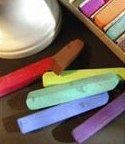
29 January 2008 | The pigments of pedagogy

(I started writing this post on October 29, 2007, continued writing on December 27, 2007, and finally finished on January 29, 2008.)
So much of human endeavor consists of making small markings on a flat surface. Teaching is no exception to this. I've just finished another semester of teaching, and likely won't get the chance to teach for several more years because of fieldwork. Strangely, among the things that I miss most are the physical tools of the trade: the chalk, the colored pens, the white-out, and even the printer toner.
No matter how modernized classrooms become, I think there will always be a place for these media. At this juncture in my teaching career, I wanted to relate what I have learned so far about the pigments of pedagogy, and what I still have to learn.
Chalk
Chalk is both a joy and a nuisance. The best sticks are fat, smooth, and buttery; the worst are thin, scratchy and ear-splitting. I adore colored chalk - it is especially useful for drawing diagrams in biology lab! When I am a Big Important Professor, I intend to carry my own colored chalk around with me all the time. Otherwise, you never know what sort of chalk (or lack thereof) will be waiting for you.
I'm still not very adept with chalk. I accidentally snap it in half as I am writing with it. I drop it on the floor and it shatters. Most amusingly of all, the eraser often jumps out of my hand as I am cleaning the blackboard. Invariably I am wearing dark clothing, and the eraser leaves a swath of white powder where it hits me on the way down. At least that keeps the students awake!
Even though I get attacked by the erasers, erasing blackboards at the end of a lesson is one of my silent joys. Last month, at the end of the ESPM C11 final exam, I erased all the notes on the big blackboards in VLSB 2050, and got a lump in my throat at the thought that I might not erase another blackboard for several years.
Colored pens
I put a great deal of time and effort into grading, and in order to make my comments as easy to read as possible, I like to use uniquely colored pens. Red, the old standard, is easy to procure, but jumps out at the student like blood splattered across the page. Blue is also easy to get, but is too likely to blend in with the student's own choice of ink.
The best remaining choices are usually green or purple, so I tend to look for those colors. It's amazing how difficult it is to find good colored ball-point or roller-ball pens that aren't blue or red! I've spent many tens of dollars of my own money buying multi-packs of ballpoint pens that include one purple or green pen, just to find it doesn't work at all.
Last semester I got completely disillusioned with the pen supply at the university bookstores. I asked around and was told to try Alko Office Supply down on Shattuck. What a treasure trove! Instead of lousy cheap ballpoints in bubble-packs, they had jars full of gorgeous roller-balls in almost every imaginable color, waiting to be tried out. My best finds were:
Deep fuschia
Brick red
Goldenrod
Storm blue
Forest green
(I liked the forest green pen so much that I used it to fill out the applications for my qualifying exam and my advancement to candidacy.)
Grading is always an arduous task, but a brightly colored, smooth and precise pen makes it much more pleasant. The pen is mightier than the sword! But there is at least one thing mightier than the pen, and that is...
White-out
I suspect that many TAs never touch a bottle of white-out: it takes a lot more time to paint over a mistake and let it dry than to simply scribble it out. However, I abhor the appearance of a scribbled-up assignment. I think my students deserve white-out. (It's especially important if you are correcting their score: there's no need to subject them to the sting of knowing that they almost got a 90, until you crossed it out and wrote 87.)
While I consider white-out a necessary substance, I dislike working with it. It smells bad, it dries slowly, and the rim of the bottle tends to get caked with layers of solidified white-out, preventing the cap from closing. I don't think I've ever actually finished a bottle of white-out: it always turns thick and gluey first, or else the brush falls apart.
My worst ever white-out experience was at the end of Fall 2006, when I was the grader for ER 100. I picked up a bottle of white-out by the cap, which turned out not to be screwed on tightly. The bottle fell on my desk, and splattered everything with a fine spray of white-out - assignments, notebooks, my clothes, and my brand new pair of leather boots. White-out is more or less exactly like paint, so this was not a laughing matter. I spent the next hour scrubbing white-out off my boots. (Fortunately they were saved, but my favorite pair of jeans was not so lucky.)
Edited to add (March 31, 2008): Anna S. points out that there are several other less aggravating white-out options, namely, white-out tape (which doesn't need to dry) and white-out pens (much neater than the bottle and brush). True indeed! I have tried both of those. But they are not perfect - the tape often peels off the paper, and the pens are inadequate for covering large areas. The latter is important for me, because I have a habit of writing lengthy comments, only to keep reading and realize that the student addressed my concern later on in the assignment. So, perhaps I should keep an arsenal of all three white-out varieties on hand!
Printer toner
Even more exciting was my run-in with printer toner last semester. It was a late night in the office and I was printing out handouts. The HP LaserJet 4200 claimed it was low on toner, but I didn't believe it, so I took out the cartridge and started shaking it. I wanted to be sure to shake it up thoroughly, so I hummed a lively tune by Grieg and jumped up and down a little bit. "There! Done!" I said, and looked down...
The printer, the desk, my clothes, and the floor were covered with a nice even layer of jet-black powder.
Details are unnecessary, but suffice it to say that I spent the rest of the night cleaning up. Note to self: Do not shake the cartridges in the 4200.
There are many other pleasures and dangers that I could name - the comforting warmth of paper fresh from the photocopier, the ongoing puzzle of deciphering students' handwriting, the solemn weight of responsibility imparted by a stack of essays waiting to be read. I miss it all, and I hope that my experiences over the last few years will prepare me well for the future.
I expect (and hope) that the classroom will never become completely digitized. I think that writing with chalk conveys immediacy and draws the students' attention; returning handwritten comments helps to build personal rapport; and, in general, physical interactions help to establish ideas in the students' memories. Certainly, it has worked well for me, despite the occasional attack by a blackboard eraser.
Now I need to focus solely on research for the next several years, and I'm sure that will help me become a more effective teacher too. But I still have some left-over colored pens sitting in the jar on my desk, and they remind me of all I am missing.
30 July 2007 | Stasis 
Last week my housemate Jenny and I were interviewing new potential tenants for the third room in the house. It was quite an involved process, and she and I had several long discussions about the different candidates and about our own personalities. Finally, after another long talk in the kitchen, we came to a decision that we were both happy with. While we talked, I arranged roses and dahlias that I had brought from my grandmother's garden.
"Whew!" I said, snipping the stems of some yellow roses. "We were lucky to get so many good applicants. It's such a relief to have the decision over with, though. Don't you think?"
"Absolutely," Jenny said, but then she got a faraway look on her face. "You know, Amber," she solemnly, "We've... uh... we've known each other for a long time now, and there's something I've been meaning to tell you."
"OK," I replied. "You can tell me, don't worry, I'll keep it confidential if you want. What is it?"
As I said that, my mind was racing. What was she going to divulge? A phobia of new housemates? A rare medical condition? A story of unrequited love?
Jenny said, "I don't like stasis."
"You don't like stasis?" I said. "Oh. Well, yes. Hmmmm. Actually, I think I'd sort of noticed that. I mean, you sometimes change the pictures on the walls, you rearrange the things on the table, and not too long ago you moved the coffee-maker to the other side of the kitchen... Anyway, that's OK. Most people don't really like stasis."

"No, no," Jenny said. "I mean the flower. The purple one."
"Stasis?" I said. "Oh! You mean... statice!"
"Stat'-iss?" she said. "Is that what it's called?"
We both burst out laughing. I wrote on the kitchen whiteboard: S-T-A-T-I-C-E. "It's also called sea lavender," I said. "But yes, statice. It has a funny name."
"Sea lavender sounds better," she said. "Now I almost don't mind it so much. But... you always put it in with the roses, and I really like the roses better without it. I think roses are just so gorgeous all by themselves."
"I see your point," I said, "and you know, on several occasions I noticed that the statice disappeared when you rearranged the flowers. I figured you weren't too fond of it. So don't worry, I didn't bring any statice this week."
We were still laughing about this after I finished fixing the roses. Before I left, I drew a red circle and line through the word "statice" on the whiteboard. I still like statice, but I don't like it so much that I would impose it upon an unwilling housemate.
Ironically, "statice" and "stasis" have the same etymology! My Oxford American Dictionary says:
stat · ice. noun.
Another term for SEA LAVENDER, esp. when cultivated as a garden plant.
ORIGIN mid 18th cent.: from modern Latin statice (former genus name), based on Greek, feminine of statikos 'causing to stand still' (with reference to medicinal use of the plant to staunch blood).
So, from now on, our roses will not be mixed with statice. Nor with stasis. Nope, all organisms in our household are dynamic and ever-changing... from the humans to the cat to the flowers.

13 July 2007 | Harry, Sophie, Milo and Meg

I loved fantasy-adventure books when I was growing up. At age six I started devouring the works of Roald Dahl (when I was that age, we moved from Australia back to the States, and my dad bought me The Witches to keep me entertained on the trans-Pacific flight. I was so engrossed by the plot twists that I barely heard my baby brother crying or the stewardesses asking me what I wanted to eat for lunch). That was the beginning of a fantasy-adventure reading habit that lasted until uni. It certainly would have lasted beyond uni, if only I didn't have to read so many books with titles like Principles of Terrestrial Ecosystem Ecology.
As an adult, among the few fantasy books I have ended up reading are the Harry Potter series. I'm not a die-hard fan; I'm only up to Book Four, but I have enjoyed the series quite a bit. Some of my friends swear by Harry Potter. Others loathe the books and think they're rubbish. I have a hard time understanding either extreme. It seems self-evident that the Harry Potter books are well-written and entertaining, if you're in the mood for light fare. (As Abraham Lincoln famously said: "People who like this sort of thing will find this the sort of thing they like.") On the other hand, it seems self-evident that they're not profound works of literature. I don't think J.K. Rowling is going to be winning the Orange Prize anytime soon. But she writes well and people enjoy it, and that's fine.
July 2007 is, of course, Global (or, for all I know, Galactic) Harry Potter Month. Headlines like "Potter film breaks record in US" and "Final Potter book to be leaked early?" are rampant. This has made me wonder anew about the reason for what seems to be a disproportionate amount of fuss over Harry Potter. Yes, they're good books. But, having a basis for comparison, I can easily come up with a list of fantasy-adventure books from my childhood that I enjoyed at least as much:
- Howl's Moving Castle by Diana Wynne Jones
- The Silver Crown by Robert C. O'Brien
- The Phantom Tollbooth by Norton Juster
- So You Want to Be a Wizard by Diane Duane
- Ozma of Oz by L. Frank Baum
- Lots of books by Roald Dahl - my favourites being The Witches, Matilda and James and the Giant Peach
- A Wrinkle in Time by Madeleine L'Engle (and the two sequels)
(This list isn't meant to be objective or exhaustive; I know there were quite a few other excellent books that I didn't get around to reading, including series by Susan Cooper, Lloyd Alexander, and Ursula K. LeGuin.)
All of these books feature young people who are unexpectedly thrust into a magical world and have to learn to make their own way, triumphing over darkness and learning a lot about themselves in the process. Very much like Harry Potter. So why did Harry Potter become a multi-billion-dollar enterprise, and J.K. Rowling a household name, when other excellent fantasy series are just sitting on the library shelves?
The best reasons I can come up with are:
- Rowling's writing is particularly smooth and easy to follow. It's like a plate of chocolate chip cookies on offer next to a strawberry-rhubarb pie and a loaf of zucchini-carrot bread. The pie and the bread are more interesting, healthier, and ultimately, more satisfying, but the cookies are so tempting and so easy to grab that they're usually the first thing that people go for.
- Rowling has (intentionally or not, I don't know) built up a huge amount of momentum by drawing the story out across ten years. If there had been only a single Harry Potter book, or a few, I doubt she would have attracted such a large following. The authors I listed above, even though most had prolific careers and published many good books, didn't do such long continuous storylines.
These explanations don't seem adequate, though. Do you have any ideas? Does the juxtaposition of good and evil in Harry Potter help to fill an widening moral rift in Western society, a rift that is caused by the decline of traditional religion and family values in the face of ever faster-paced capitalist accumulation and technological change?
You can tell I'm not cut out to be a comparative literature major. But I think I will read the next Harry Potter book when I get a chance, after I have finished Principles of Terrestrial Ecosystem Ecology.
N.B. To explain the title: you all know who Harry is; Sophie, Milo, and Meg are the protagonists of Howl's Moving Castle, The Phantom Tollbooth, and A Wrinkle in Time respectively.
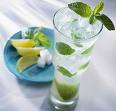

25 June 2007 | Nova Scotia to mojito

Over Christmas last year, Gabe told me about a game called "Six Degrees of Wikipedia." It's like "Six Degrees of Kevin Bacon," but instead of actors, it uses Wikipedia articles: your challenger names a starting article and an ending article, and you have to try to link them with six or fewer clicks.
The rules aren't entirely clear to me (I think "six degrees" means six links rather than six nodes, but I'm not sure; nor am I sure whether you are allowed to backtrack if you hit a dead end.) Still, it's fun regardless of the exact rules.
Last night I challenged Jeremy to this game, with the starting article "Nova Scotia" and the ending article "Mojito." He came up with the following:
Nova Scotia → agriculture → sugar → rum → mojito
Not bad eh! I wonder if there are any shorter paths, but four looks hard to beat. This was a much more sucessful round than "golf → naked mole rat," to which Gabe and I challenged Cliff over Christmas, and which I think required about eight or nine clicks.
Hey, what about "mojito" to "naked mole rat"? Let's see...
mojito → United States → endangered species → salt marsh harvest mouse → rodent → Bathyergidae → naked mole rat
So, almost anything is possible. Here I'd like to reflect upon some insights from network theory, but I think I've already spent more time writing about this than I can possibly justify. I'm procrastinating by writing about procrastination!
Addendum (July 9, 2007):
Well, Jeremy came up with a winning solution to that pair of Wikipedia articles that we struggled with over Christmas:
golf → Scotland → reindeer → fur → naked mole rat
Cliff, having been informed of this solution, protested that many of those Wikipedia articles had been extensively edited since last December, and that some of the above links may not have existed back then. To settle the question of who's the greatest Wikipedia navigator of all, I think we shall have to have a concurrent head-to-head tournament.
26 January 2007 | The typo fairy and the toilet-paper
fairy 
I am known for my precision and attention to detail, which is sometimes a good thing, and sometimes a bad thing. I've realized that this tendency has led to me carrying out random acts of... well, not kindness, exactly, but incremental improvement. In particular, I tend to take on the following two roles:
- The typo fairy. When someone sends me an otherwise careful e-mail with a typo or two (e.g. "by" instead of "but"; "taht" instead of "that") I fix the typo before sending it back to them, and hope they never notice. It only works for small mistakes - I once tried it when someone wrote me an e-mail addressing me as Amanda instead of Amber. Not only did he realize his mistake, he was mystified at the subsequent transmogrification. Fortunately, most of the time the Typo Fairy's pickiness goes unnoticed.
- The toilet paper fairy. My housemates have an aversion to putting the new toilet paper roll on the spool when the old roll is finished. Instead, they balance the new roll on top of the spool, or on top of the toilet tank, or on the windowsill, or some such. This is unsatisfactory as far as I'm concerned, so I clip the new roll into its proper place. I suspect that this would never happen without me.
There are endless other niches for precision-oriented fairies: cleaning specks off mirrors; resetting slightly slow clocks; submitting customer feedback forms with minor complaints; removing the tape from wrapping paper and folding the paper for future use. I enjoy doing all of these things. I am not sure if I am making the world a better place or merely a more precise place...

16 July 2006 | The hegemony of grapes 
Yesterday I went wine tasting in Napa with Janice, Stewart, Mo and Jon (photos). It was the first time I had ever gone wine tasting, despite having lived in the Bay Area for more than half my life! I learned a great deal about different grape varieties, the details of the fermentation process, and the subtleties of wine-food pairings. For example, did you know:
- The yeast that are associated with Zinfandel grapes sometimes have a higher alcohol tolerance thean other yeasts, so Zinfandel wine can attain 18% alcohol (as compared to the normal maximum of 14.5%).
- Fermentation converts sugar to alcohol, so to get a wine that is both sweet and high in alcohol (like sherry), you have to stop the fermentation process while the wine is still quite sweet, and then add distilled alcohol from another source. (The opposite process - adding sugar to wine - is illegal in California.)
- One reason to decant a red wine is to allow oxygen to break down the tannic acid. This mellows the flavor of the wine. It's a hurried-up version of the same process that happens when red wine is aged in the bottle. (White wine, with lower tannin content, doesn't need to be aged nearly as long).
- Salt also helps to break down tannins, so harsh red wines taste much better if served with salty foods.
- Sometimes, as a final step in the first year of barrel-aging a wine, egg whites are poured into the bung on the top of the barrel, and as they diffuse downward, they take with them any suspended particles. This is called "fining". The wine is then siphoned into a new barrel to continue aging.
By the end of the day, I felt quite overwhelmed by the vast body of knowledge pertaining to wine-making. Over the past several thousand years, we seem to have thought of everything, and have refined the process to the extent that we know exactly what time of day to pick the grapes, exactly how long to leave the skins on, exactly what temperature to maintain during fermentation... Wow, I thought, there sure is a lot to know about grapes.
I started wondering what it was about grapes (Vitus vinifera) that had spawned this incredible proliferation of artistry and science. Were grapes somehow more complex than other fruits? More genetically diverse? Were their juices better suited for fermentation? Did the flavorful skin combined with the mild pulp allow for endless creativity in adjusting the balance of the two? Why grapes, and why not some other fruit? Was it just because grapes were domesticated first and thus had a head-start?
Mo and I started discussing this. What about apples? Why wasn't apple cider the be-all and end-all of alcoholic drinks? I found myself imagining mango wine, strawberry wine, banana wine, lychee wine. Surely techniques could be developed for each of these that would be equally as refined and complex as our techniques for grapes. (I imagined different colors of mangoes, different methods for removing the fibers, different practices for taking the skins off, different filtering and blending practices...) People can, and do, make wine out of just about anything - so why did grapes become the standard?
I don't know. (Let me know if you do!) But on our wine-tasting trip it became clear to me that, as a feedstock for sophisticated alcoholic beverages in the Western world, grapes have an unassailable hegemony.
05 July 2006 | Tempest in a coffee cup 
Just a quick update - ever since noticing the phantasmagorical steam-and-foam patterns in my teacup last month (see "Tempest in a teacup"), I have been on the lookout for similar patterns elsewhere. Success! Last week I was able to recreate the phenomenon, albeit in a much less dramatic form, by using the same brand of Kenyan ginger tea, the same teacup, and the same brewing technique. (I am not sure why several identical earlier attempts failed.)
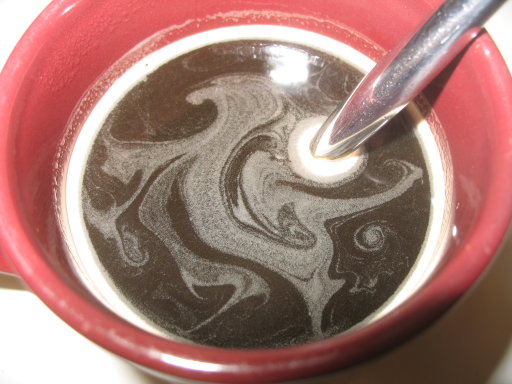
And, this morning at Free Speech Cafe, I observed the same patterns in my freshly-poured coffee. The barista handed me the coffee in a tall glass, and I was about to add milk to it, when I noticed a translucent and shimmering white layer on the surface. As I watched, the transparency of the layer fluctuated while spasms of steam emerged from it. Simultaneously, sharply defined lines and tendrils darted across the layer's surface, only to fade away in a second, then reappear. These delicate etchings seemed almost alive in the way they quivered and proliferated.
For several minutes I stood there, at the milk-and-sugar counter, staring into my coffee cup. Then I realized that perhaps I should move because people would think I had lost my mind. But I could not bear to destroy the complexity of the patterns by pouring milk into them. So I took the coffee to my table, poured the milk into a separate cup, and took that to my table. I watched my coffee for the next five minutes until the steam dissipated and the surface was still.
I implore you, keep a close eye on your coffee and tea! You may discover something exquisitely beautiful and highly entertaining.
30 June 2006 | Cultured meat 
Keta the cat caught a mouse the other day, and Zach rescued it from torture and death. I was unsure whether this was the right thing to do. Yes, the mouse would suffer, but didn't the cows and chickens that went into Keta's cat-food also suffer? At least the mouse was free-range and organic! Then it occurred to me, well, to get x amount of cat food, you'd have to kill n cows, but you'd have to kill approximately 15,000n mice. So there is 15,000 times more suffering involved when cats eat mice instead of cows.
Trying to generalize this thought, I proposed to Rex and Cliff that what one really wants to maximize is the meat/suffering ratio. Mice are a bad choice because they are so small. Cows are much better. Elephants and whales would be better still! After all, as the size of the animal → ∞, the meat/suffering ratio also → ∞.
Cliff, however, pointed out that larger animals have more complex nervous systems, and therefore a higher capacity for suffering. What we really wanted to maximize, he suggested, was µg of meat per neuron. In that case, he said, "you should eat mostly sea-slugs, which are big and have just 10,000 neurons, giving about 10 milligrams per neuron. By contrast, a fat and somewhat daft human has just 1 nanogram of meat per neuron."
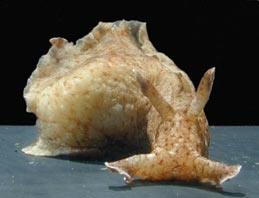 |
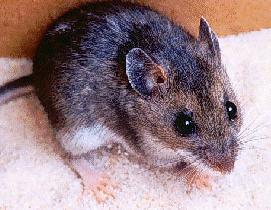
|
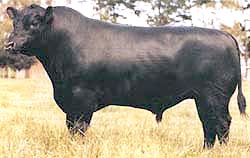
|  |
Rex, Cliff and I all agreed that the best solution - asssuming that people are obliged to continue eating meat - is to grow meat in vats, so that there are no neurons involved at all. Such technology seems well within the realm of possibility (it's called "cultured meat," or "in vitro meat"). But not very much effort has been put into it so far. I guess eating sentient creatures is a deeply ingrained part of human culture.
That evening, Ian and I went to the Long Now lecture by Will Wright, and went to dinner at Chevy's afterwards, and I mentioned some of these ideas to him. The waiter came to take our order while I was in the restroom, and when I returned, Ian said triumphantly, "I ordered you the Cornucopia of Vertebrate Death!" (He'd actually ordered the chile relleno I asked for.) Poor, tasty vertebrates. As long as the meat/suffering ratio, and the meat/environmental impact ratio, remain at their current abysmal level, I will try to continue eating things that photosynthesize rather than breathe.
15 June 2006 | Uses of llamas 

Spent a wonderful day in Pescadero yesterday (photos), and drove by a llama farm on the way. This provoked the question, "What are llamas useful for, anyway?" Neither Zach nor I had any idea, so upon returning home, I did some internet research. According to llamaweb.com, llamas have the following uses: carrying packs, wool production, and guarding livestock. Apparently, Harley Goat Farm in Pescadero uses a llama to chase away coyotes and bobcats from their goat herd. Who knew llamas could be so intrepid?
8 June 2006 | Tempest in a teacup 
I have on my desk a freshly brewed cup of tea with the teabag still in. Miniscule bubbles are rising to the surface and creating a smooth translucent layer of white on the surface. The tea is steaming, and the where the wafts of steam emerge from the tea, they erase the white froth. The patterns are incredible!
The white froth builds up for a few seconds, and then a spasm of steam goes across the surface, leaving a dark swath. The trails left by the steam are highly complex. A trail seems to nucleate at one point and then rapidly branch, almost faster than the eye can see. The branching patterns are similar to ice freezing, but with softer curves, almost like living tendrils. Sometimes multiple trails will branch from one point like blades of grass sprouting from the ground. Some of the trails are as broad as my little finger, others the most delicate hair-widths.
After a spasm of steam has left its proliferating tracks and trails, the surface of the teacup is quiet for a few seconds, as the white froth gradually builds again. Then a new episode begins. (I have been watching it for almost half an hour...)
Last updated September 16, 2008.